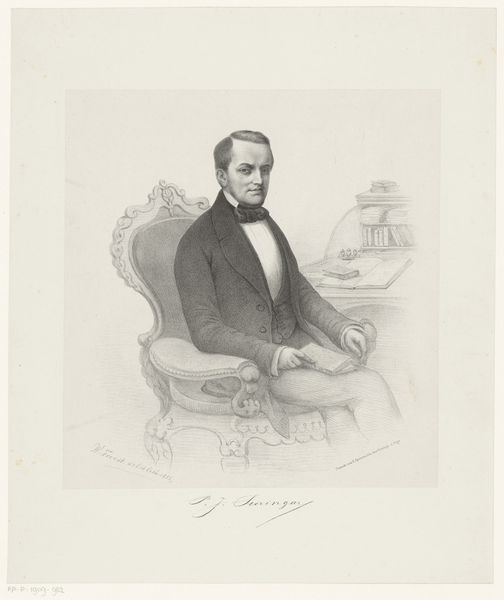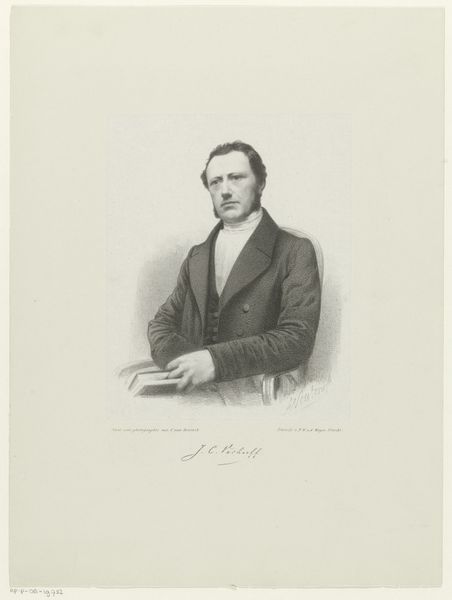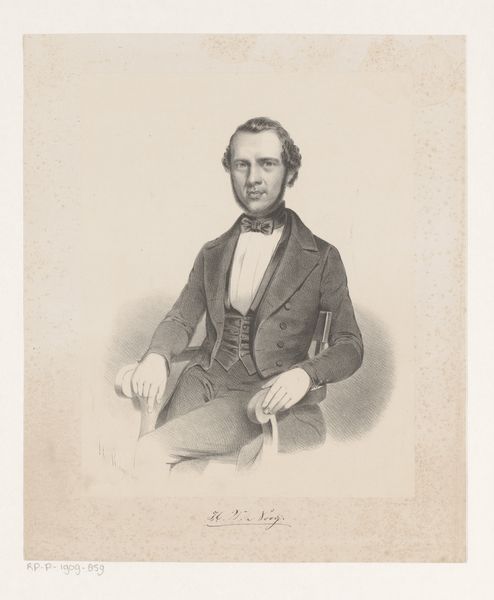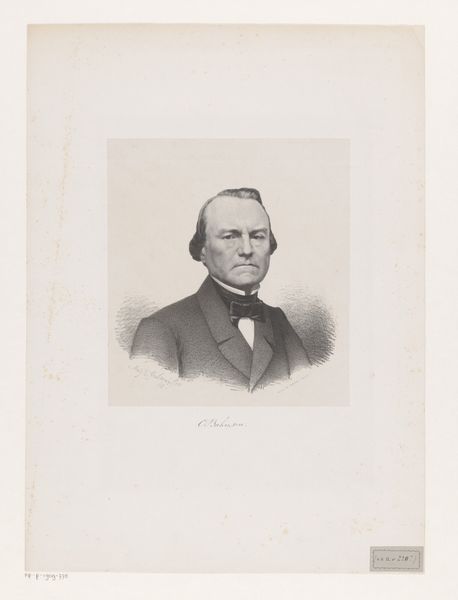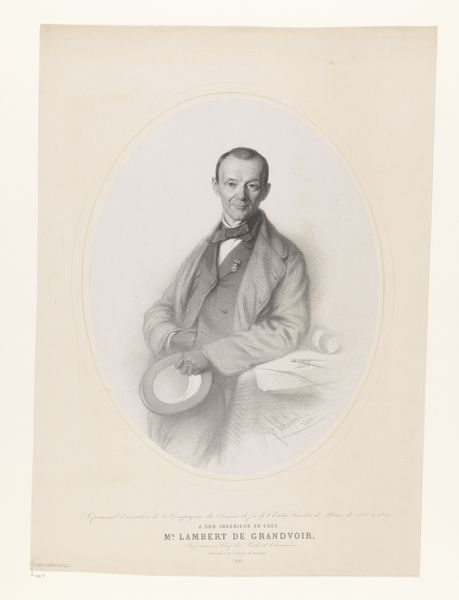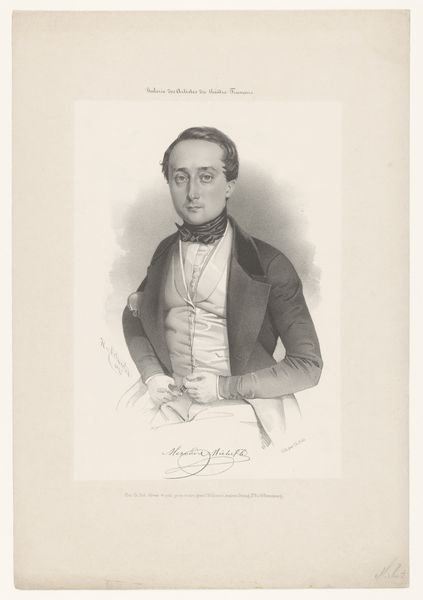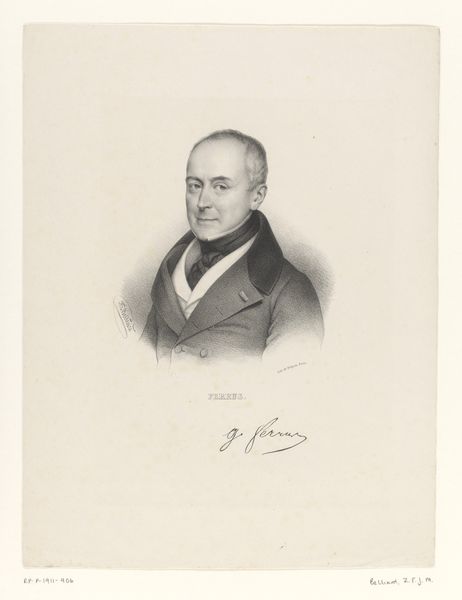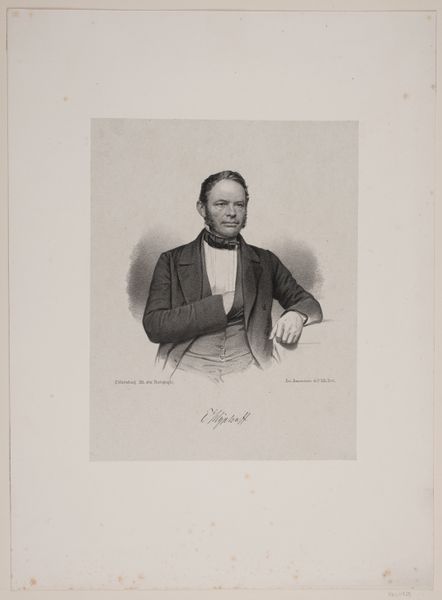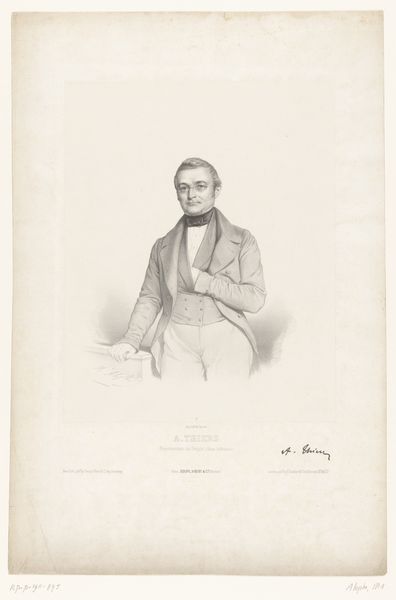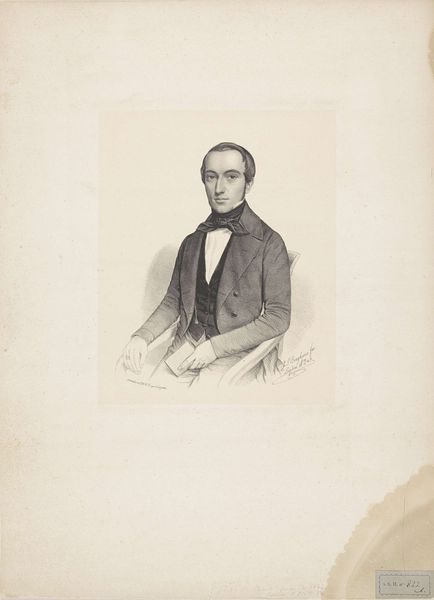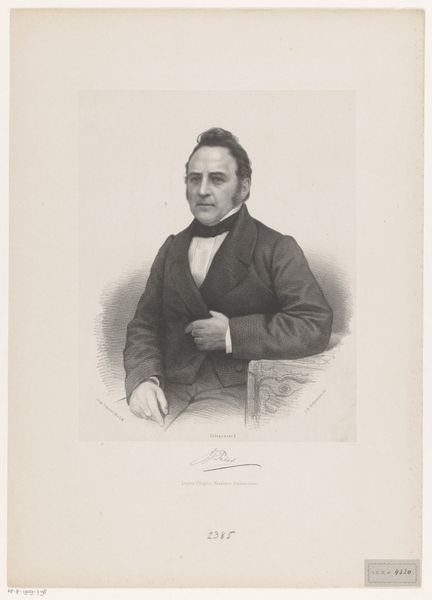
lithograph, print
#
portrait
#
lithograph
# print
#
figuration
#
romanticism
#
academic-art
#
realism
Dimensions: height 334 mm, width 254 mm
Copyright: Rijks Museum: Open Domain
Hendrik Ringeling made this portrait of W. Hoezoo in 1859, using lithography. Here we see a man of apparent wealth and social standing, captured in a style that reflects the values and conventions of the 19th-century Dutch society. The image creates meaning through visual codes such as the sitter's formal attire, posture, and the inclusion of a book. These details tell us that the sitter is an educated man, perhaps with scholarly or professional interests. The portrait likely served as a representation of status, virtue, and cultural refinement that were highly valued by the middle and upper classes during the Dutch Golden Age. As historians of art, we have a duty to go beyond the image, researching Dutch society at that time, including its economic structures, social hierarchies, and intellectual movements. We can also look at the history of portraiture in the Netherlands, examining the institutions that promoted and supported artistic production. This will help us understand the role that art plays in reflecting and shaping social values.
Comments
No comments
Be the first to comment and join the conversation on the ultimate creative platform.
